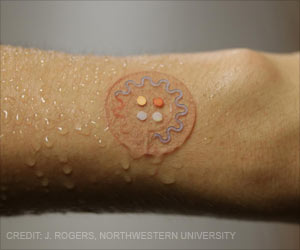New research points way to monitor diseases in the next generation of wearable health monitors by measuring gases released from the skin.

TOP INSIGHT
Health parameters usually measured in wearable technologies will rely on sensors gases such as acetone and ethanol released from the skin.
Appearance of Future Wearable Health Monitors
The final product of the team’s research would be a small device a person could wear on low-sweat body locations, like behind the ear or on the nails. And as more people become familiar with using wearable devices in their everyday lives, researchers expect technology and medicine to become even more intertwined.There is a long history of measuring the concentration of organic compounds in our breath, a type of gas as an indicator of health. One example would be blowing into a breathalyzer, a device that can measure the amount of alcohol in a person’s blood or be used to detect viruses.
But such a gadget requires “active intent” and only provides a “momentary snapshot” of the body. Compared to the number of chemicals released when breathing, new sensors can operate on much smaller amounts of gaseous acetone released from the skin.
Acetone is one of the substances secreted from the skin that can tell researchers a lot about the inner workings of the human body. Concentrations of acetone in the breath have also been shown to be related to blood sugar levels and fat-burning rates.
To test whether their sensors could detect varying amounts of these enlightening chemicals (which would signal the presence of the gaseous molecules), researchers created a film material made out of derivatives of plant cellulose and electroactive polymers. This film can bend dramatically in response to how much the acetone is detected in its environment.
Future Sensor Will Detect Liver Disease as Well
Their findings showed that the films are sensitive enough to track long-term changes in the body. While focusing on a metabolic rate sensor, another possible use would be to track ethanol which, in the body, can spell signs of liver disease.More work needs to be done on how the films used in this study would work as actual sensors worn on the body. The opportunity to make someone’s life easier will be feasible with this study.
 MEDINDIA
MEDINDIA




 Email
Email










